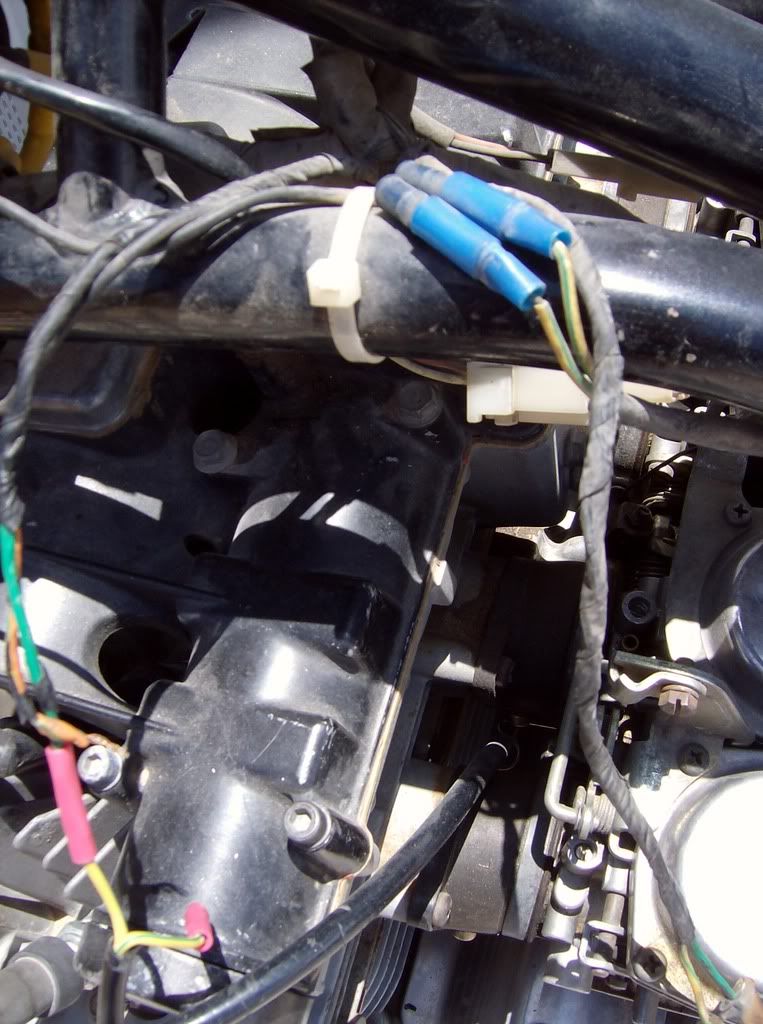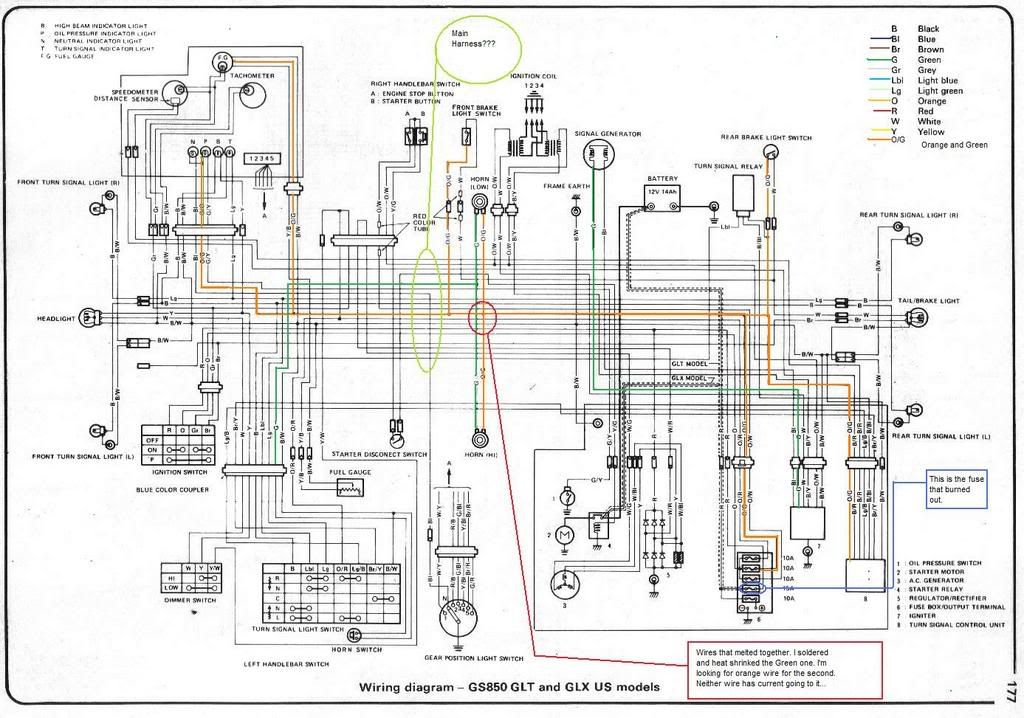First, it started by the turn signals not working while he was riding it. Got it home, found a blown fuse. No problem, replaced the fuse, took it out and boom...fuse blows again. No turn signals or light. took it back home, and another blown fuse...replaced it again and parked it.
I got back into town and took a look and found the problem. The wire that was connected to the horn melted (I am guessing due to it's proximity to the exhaust..why someone would hook it up there, I had no clue) Piece of cake, I said. I just relocate the horn and run new wires...not so easy...as I was removing the wire protector, I found that the wires had actually melted together further up
 They were 2 individual wires that connected to the horn, but somehow (short I am guessing) fused into one wire.
They were 2 individual wires that connected to the horn, but somehow (short I am guessing) fused into one wire.I unwrapped the electrical tape and checked the wires all the way back to the main harness. They were fused together all the way to the harness. I separated the two wires and then cut the bad part of the green wire off, soldered a new piece and heat shrinked it. I am going to Checker today to look for some orange wire (Heaven knows where I'll find orange/green wires) and then do the same to that one.
I then checked the current to both wires and found that neither one is hot. I am getting current to the fuse box, but not to these two wires. Update: Looks like the fuses didn't have a good connection. Took them out and cleaned the contacts and put them back in. Now, I get juice to the orange/green wire and my turn signals and brake light are now working. What is now bugging me is that the green wire (which is the ground for the horn) is not getting juice when I press the horn button...shouldn't my light tester light up when I press the button and touch the green wire???
I know nothing about wiring and am feeling a bit intimidated. Give me a motor to rebuild, no problem, but wiring...it has me sweatin!!
By the way, the bike is a 1980 Suzuki GS850GL.
I have attached the wiring diagram that I color coded with the wires I am having issues with.
so, now I am at a loss as to what to do next...any thoughts??


.png)

 /Thanks Pete...As soon as it cools off (it's 104 outside), I am going to take the headlight out again (yes, have had it out several times). Wish i would have caught the ignition switch problem earlier. What you said makes sense. As i was looking at the diagram more and more, i can see how everything is together. The one thing all these switches have in common is that blasted O/G wire. This was the wire that had all the issues.
/Thanks Pete...As soon as it cools off (it's 104 outside), I am going to take the headlight out again (yes, have had it out several times). Wish i would have caught the ignition switch problem earlier. What you said makes sense. As i was looking at the diagram more and more, i can see how everything is together. The one thing all these switches have in common is that blasted O/G wire. This was the wire that had all the issues.  ) everything is ok. On the other side, the orange and the red have fused themselves together.
) everything is ok. On the other side, the orange and the red have fused themselves together. 
Comment